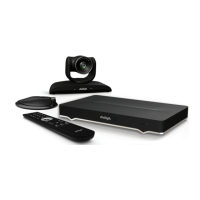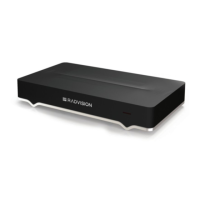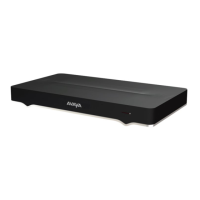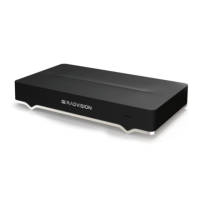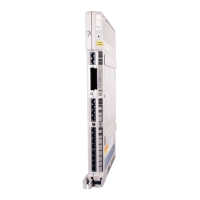Configuring Microphones
About this task
After connecting your microphones to the Avaya Room System XT Series, you must enable the
relevant audio connection and configure its settings.
There are several connections available to input audio to the XT Series:
•
The dedicated microphone
port is for the digital Three-way Microphone Pod. The Avaya
XT5000 Series and the Avaya XT7000 Series can support two of these microphones daisy-
chained. When capturing stereo audio, only the first Microphone Pod is used.
• The USB port is used for USB headsets (lower USB only), or for a USB camera with a built-in
microphone (upper USB only).
•
The audio input port is for:
- The analog One-way Microphone Pod or any other analog microphone with a 3.5mm jack.
- A third-party digital microphone with a mini-TOSlink connector.
- Audio mixers like those from Clear One. An audio mixer connects multiple microphones (or
other audio inputs) to generate a single audio stream.
- A computer audio-out connection or line audio connection.
Figure 62: Audio input ports on the XT Series
You define settings for each type of audio device, not per port on the XT Codec Unit. Therefore
there are separate settings for each type of microphone, even when some would share the same
type of connection.
Before you begin
Choose and then connect the analog audio equipment you need as described in
Connecting
Microphones and Speakers to the XT Series on page 73.
If configuring from the endpoint, you must first enable advanced configuration, as described in
Enabling Advanced Maintenance on the XT Series on page 151.
Configuring Microphones
August 2020 Deployment Guide for Avaya XT Series 131
Comments on this document? infodev@avaya.com

